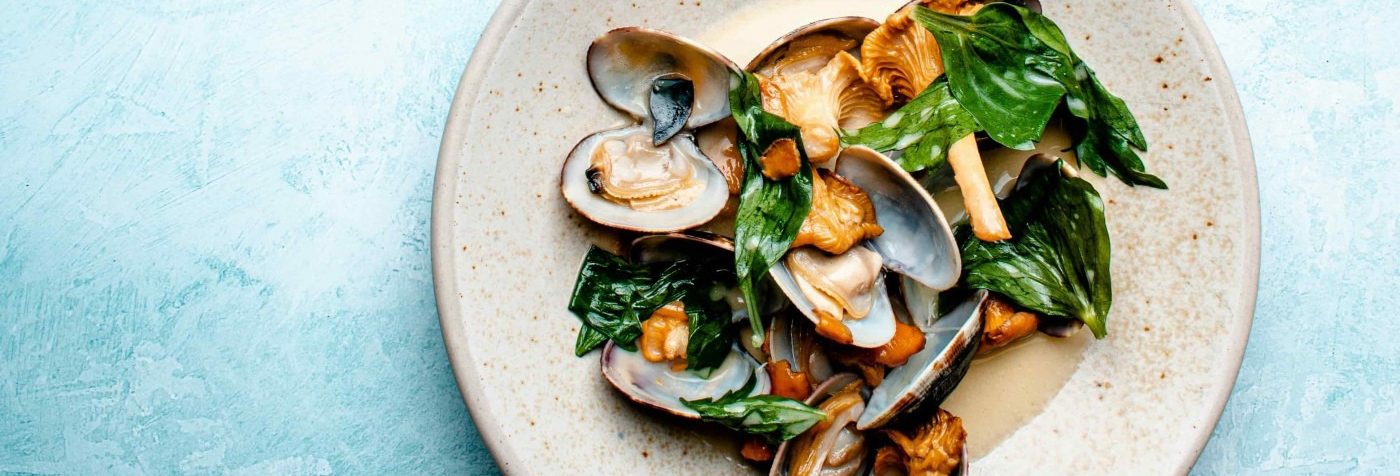Making better choices for sustainable seafood
B y carbon footprint alone, seafood is a more sustainable protein source than meat. The current pace of capture and different methods used to source fish, however, means that question marks remain about the overall sustainability of eating seafood. For seafood to be sustainable, the environmental effects of capture and cultivation must be minimised, and fish stocks must persist. This matters because over one billion people rely on seafood as their main food source, and billions more rely on it as a major source of protein.
The market for seafood is only expected to grow over the next decade, meaning that consumer choices and the practices of global fisheries will continue to have large environmental impacts.
COUNTING CARBON
Counting the carbon impact of seafood requires knowledge of the particular type of fish and the fishery it came from. More broadly, the factors that matter are whether the fish is farmed or wild-caught and, if it’s
the latter, how the fish is caught. The main cause of greenhouse gas (GHG) emissions from wild-caught fish is the fuel burned to power fishing vessels. With farmed fish, the main culprit is fish feed. Some feed is made up of wild-caught fish, and other common ingredients include corn and soya. Production of the latter has led to swathes of deforestation, particularly in South America. Through this channel, the cultivation of fish reduces carbon sinks.
Consumers bear some responsibility
Farmed seafood can have a smaller carbon footprint than wild-caught equivalents, though this depends on the species in question. The cultivation of bivalves and shrimp, for example, produces over nine times less CO2 equivalent than their wild-caught counterparts, while the difference for salmon and trout is minimal. For wild-caught fish, some catching methods are generally more carbon-friendly than others. Purse seining, a wild-catch method, uses less fuel than pole and line.
LOOKING OUT FOR THE OCEAN
Fish stocks are under threat from both consumers and fisheries. Concentrated consumer demand drives overfishing, whilst mismanaged bycatch and avoidable pollution pose further risk to stocks. Consumers bear some responsibility for commercial fishing and aquaculture decisions through their choices in the supermarket. Shoppers usually only want a narrow selection of seafood. 80% of UK consumption is cod, haddock, prawns, salmon, and tuna. Such concentrated demand incentivises the intense farming of only a few species of fish, threatening fish stocks today and in the future. As of last year, over a third of UK fish stocks were overfished.
Alternative fishing methods exist to reduce the damage caused to aquatic life
Aquatic life not destined for the dinner table often ends up as collateral damage whether fish are farmed or caught. Nets, traps, and other fish-capture methods of- ten catch creatures not sought by fishermen.
Bycatch is an expected consequence of any large-scale fishing activity, however, and can be sustainable with proper management. Pesticides are used on fish farms because disease spreads much faster among the densely packed fish. Chemicals like as emamectin, used to treat lice in salmon, pollute surrounding waters and harm other fish. Plastic pollution from fishing activity not only harms non-targeted aquatic life, but also reduces stocks of targeted species. The term ghost-fishing describes a scenario where fish are caught in discarded nets and traps, and do not make it to fishing vessels. Here, aquatic life is lost with no economic benefit, and the resulting depletion of fish stocks could reduce future yields.
DOES SUSTAINABLE SEAFOOD EXIST?
Alternative fishing methods exist to reduce the damage caused to aquatic life. For example, one-by-one fishing involves using rods and lines to catch individual fish, minimising bycatch fatalities and plastic pollution. Furthermore, whereas mass-capture methods like dredging cause damage to seabed habitats, this is not an issue with one-by-one fishing. As a result, this method has been deemed as more sustainable.
As mentioned in the opening, however, for seafood to be fully sustainable, it must be sustainable in terms of both ocean impacts and climate impacts. Changes made to benefit the ocean can brush up against climate goals, and this is one of the issues with one-by-one methods like pole and line. Pole and line fishing is less time efficient than mass-capture methods, meaning pole and line fish may have a higher carbon footprint, despite being better for the ocean.
The power of changing collective buying patterns cannot be ignored
Though the tension between climate sustainability and fish stock sustainability casts serious doubt over the current existence of fully sustainable seafood, overfishing is one area in which carbon and ocean appear to be aligned. Research indicates that reducing overfishing can improve the carbon footprint of fisheries. Consumers can impact this by broadening the variety of fish they buy. Although the practices of global fisheries cannot be changed by individual consumer decisions, the power of changing collective buying patterns cannot be ignored.
Whether you are content with being more sustainable whilst eating staple seafoods, or broadening your horizons in service of fully sustainable seafood, helpful guides exist online.

Comments